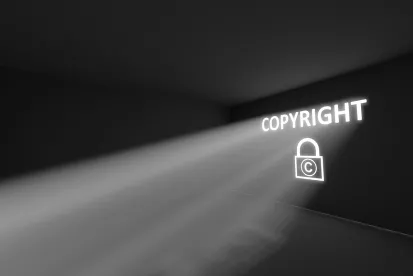The US Court of Appeals for the Ninth Circuit overturned a district court’s summary judgment, rejecting an accused publisher’s argument that their use of copyrighted photos embedded in articles was fair use under the Copyright Act. McGucken v. Pub Ocean Ltd., Case No. 21-55854 (9th Cir. Aug. 3, 2022) (Ikuta, Nguyen, Owens, JJ.)
Elliot McGucken captured and edited photographs of an ephemeral lake that formed on the desert floor in Death Valley. He posted his photos to Instagram and licensed them to several websites that ran articles about the lake. Pub Ocean posted an article about the lake with some digression on loosely related topics. It used 12 of McGucken’s photos, among others, without seeking or receiving a license. McGucken filed suit for copyright infringement. The district court sua sponte granted summary judgment for Pub Ocean, concluding that it was entitled to a fair use defense. McGucken appealed.
The Ninth Circuit reversed after applying the four-factor test in determining whether fair use applies:
-
The purpose and character of the use
-
The nature of the copyrighted work
-
The amount and substantiality of the portion used in relation to the copyrighted work as a whole
-
The effect of the use upon the potential market for or value of the copyrighted work.
Factor 1: The Purpose and Character of the Use
The Ninth Circuit explained that the question under the first factor is whether the infringing work is transformative and whether it is commercial. Higher transformation in new works means the other factors, including commercialism, are less significant. For-profit news articles are generally considered commercial uses. The Court explained that a work conveying factual information does not transform a copyrighted work when it uses a “clear, visual recording” of the infringing work’s subject.
The Ninth Circuit found that Pub Ocean’s article used the photos for the exact purpose for which they were taken—to depict the lake. The Court disagreed that the article was transformative when Pub Ocean merely “recontextualiz[ed] or repackage[ed] [ ] one work into another.” The Court also disagreed with Pub Ocean’s argument that the fair use defense was strengthened by its purpose of news reporting (one example of fair use listed in 17 U.S.C. § 107). The Court explained that the category of news reporting alone is not sufficient to sustain a per se finding of fair use. The Court also noted that Pub Ocean’s minor cropping and arrangement of photos in the article’s text, even if considered marginal transformation, was too weak to favor fair use.
Factor 2: The Nature of the Copyrighted Work
Under the second factor, the question is the extent to which the copyrighted work is creative and whether it is unpublished. The Ninth Circuit found that McGucken’s photos were creative because they were the product of many technical and artistic decisions. The Court also explained that the publication of the photos on Instagram and in articles failed to weigh in favor of fair use. Citing Dr. Seuss, the Court explained that “while a work’s unpublished status would weigh against fair use, the converse is not necessarily true.”
Factor 3: The Amount and Substantiality of the Portion Used in Relation to the Copyrighted Work as a Whole
The third factor concerns the quantitative amount and qualitative value of the original work used in relation to the justification for that use. If the infringer publishes “the heart of an individual copyrighted picture without justification,” this factor weighs against fair use. The Ninth Circuit found that Pub Ocean’s use of McGucken’s 12 photos was not excused merely because the article included 28 photos from other sources. The Court found that the quantitative amount and qualitative value weighed against fair use because the 12 photos were used with only negligible cropping and “it is clear that the article took the heart of each of the twelve photos.”
Factor 4: The Effect of the Use upon the Potential Market for or Value of the Copyrighted Work
The fourth factor addresses the extent of market harm caused by the alleged infringer’s particular actions and whether unrestricted and widespread conduct of the sort engaged in by the defendant would substantially adversely impact the potential market for the original and for derivative works. The Ninth Circuit found that there was little direct evidence of actual market harm, as McGucken licensed his photos about one month after the article was published. But to negate fair use, McGucken only needed to show that if the challenged use was widespread, it would adversely affect the potential market for the copyrighted work. The Court explained that the article was a “ready market substitute” for McGucken’s photos and the licensees’ articles and may be preferable to the standalone photo collection or shorter article with no other content. The Court thus found that the harm to the market for licensing the photos would be immense and would destroy a derivative market.
Accordingly, the Ninth Circuit reversed the district court’s grant of summary judgment, directed the district court to enter partial summary judgment for McGucken on the fair use issue and remanded for further proceedings.




 />i
/>i

